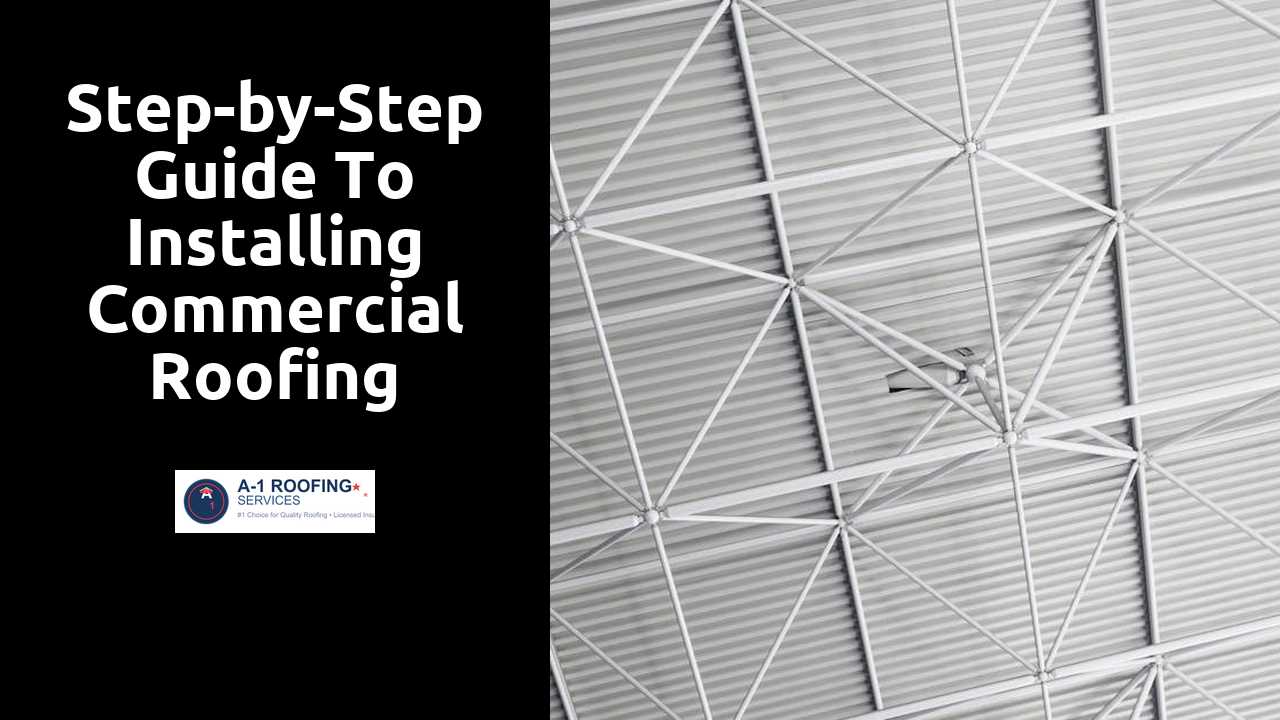
Step-by-Step Guide to Installing Commercial Roofing Systems
Table Of Contents
Removing Existing Roofing Material
Prior to installing a new roofing system, it is necessary to remove existing materials. This process involves thorough evaluation to determine the type of roofing in place, whether it be shingles, metal, or commercial membrane. Safety should be prioritized, employing protective gear such as gloves and goggles to avoid hazards. Tools like pry bars, roofing knives, and scrapers are essential for this task, ensuring that all layers of the old roof are removed effectively.
Once the initial materials are stripped away, the underlying layers must also be assessed. This might reveal issues such as water damage or rot that need addressing before moving forward. Careful inspection will help identify sections that require repair or reinforcement. Completing this stage properly ensures a strong foundation for the new roofing system, ultimately contributing to its longevity and performance.
View this external resource for great tips and advice.
Techniques for Safe Removal
Prioritizing safety during the removal of existing roofing materials is crucial. Start by securing the area, ensuring that all personnel wear appropriate personal protective equipment, including helmets, gloves, and harnesses. Utilizing a scaffold or ladder system enhances worker safety and efficiency. It's also important to assess weather conditions and schedule the removal process on dry, calm days to minimize risks.
Employing the right tools makes the removal as efficient as possible. Use a roofing shovel or pitchfork for slate and shingles, and a pry bar for metal panels. When dealing with materials like tar or gravel, a specialized removal tool can help. Carefully detach materials in sections to prevent debris from falling unexpectedly. Always dispose of materials responsibly, following local regulations to maintain environmental safety.
Inspecting and Repairing Underlying Structures
Prior to installing a new roofing system, a thorough inspection of the underlying structures is essential. This process involves checking the decking, rafters, and any insulation materials for damage or wear. Look for signs of mold, rot, or water infiltration, which can compromise the integrity of the new roof. It’s crucial to address any issues found during this assessment to ensure a stable and secure foundation for the new materials.
Necessary repairs can range from replacing damaged boards to reinforcing structural components. In some cases, mold remediation may be required to ensure a healthy environment beneath the roof. Any insulation concerns should also be addressed to enhance energy efficiency. Taking the time to properly inspect and repair underlying structures not only prolongs the lifespan of the new roofing system but also helps protect the building’s overall integrity.
Necessary Repairs Before New Installation
Before proceeding with the installation of a new roofing system, it is crucial to assess and address any underlying structural issues. The inspection process should focus on identifying signs of water damage, rot, or deterioration in the decking and support structures. Any compromised materials must be replaced to ensure the integrity and longevity of the new roof. Failing to make these necessary repairs can lead to larger problems in the future, potentially costing more in repairs and maintenance.
In addition to structural concerns, it is essential to check existing flashings, gutters, and drainage systems for any signs of wear or damage. Proper functioning of these components is vital in directing water away from the roof and preventing leaks. If any issues are found, repairs or replacements should be completed before the new roofing system is installed. Ensuring that the entire roofing framework is sound provides a solid foundation for the new materials and enhances the overall performance of the roof.
Installing the New Roofing System
Once the underlying structures are thoroughly inspected and any necessary repairs are completed, it is time to proceed with the installation of the new roofing system. Begin by ensuring that all materials and tools required for the project are on-site. This may include roofing panels, insulation, fasteners, and underlayment. Following the manufacturer's guidelines for the specific roofing material chosen is essential for maximizing performance and longevity.
Each layer of the roofing system should be installed methodically. Start by laying down the underlayment, which acts as a moisture barrier. Secure it properly, making sure to overlap seams to prevent water infiltration. After the underlayment is in place, install the primary roofing material. Depending on the type selected, this might involve fastening down metal panels, applying membrane sheets, or placing shingles. Pay careful attention to flashing and other waterproof components, as they are crucial for preventing leaks and ensuring structural integrity.
Step-by-Step Installation Process
Begin by preparing the deck, ensuring it is clean and free of debris. Lay down an appropriate underlayment to provide added moisture protection. This material acts as a barrier against water infiltration. Once the underlayment is in place, start installing the new roofing panels or sheets according to the manufacturer's specifications. Make sure to align the edges properly for a seamless finish.
After securing the panels, focus on the flashing and edge details. Install flashing around any protrusions like vents and chimneys to prevent water entry. Use sealants at joints to create a watertight seal. Ensure that all fasteners are adequately tightened to withstand wind uplift. Finally, conduct a thorough inspection of the entire roofing system to catch any potential issues before wrapping up the project.
Related Links
Key Considerations for Commercial Roofing InstallationUnderstanding Building Codes for Commercial Roof Installation